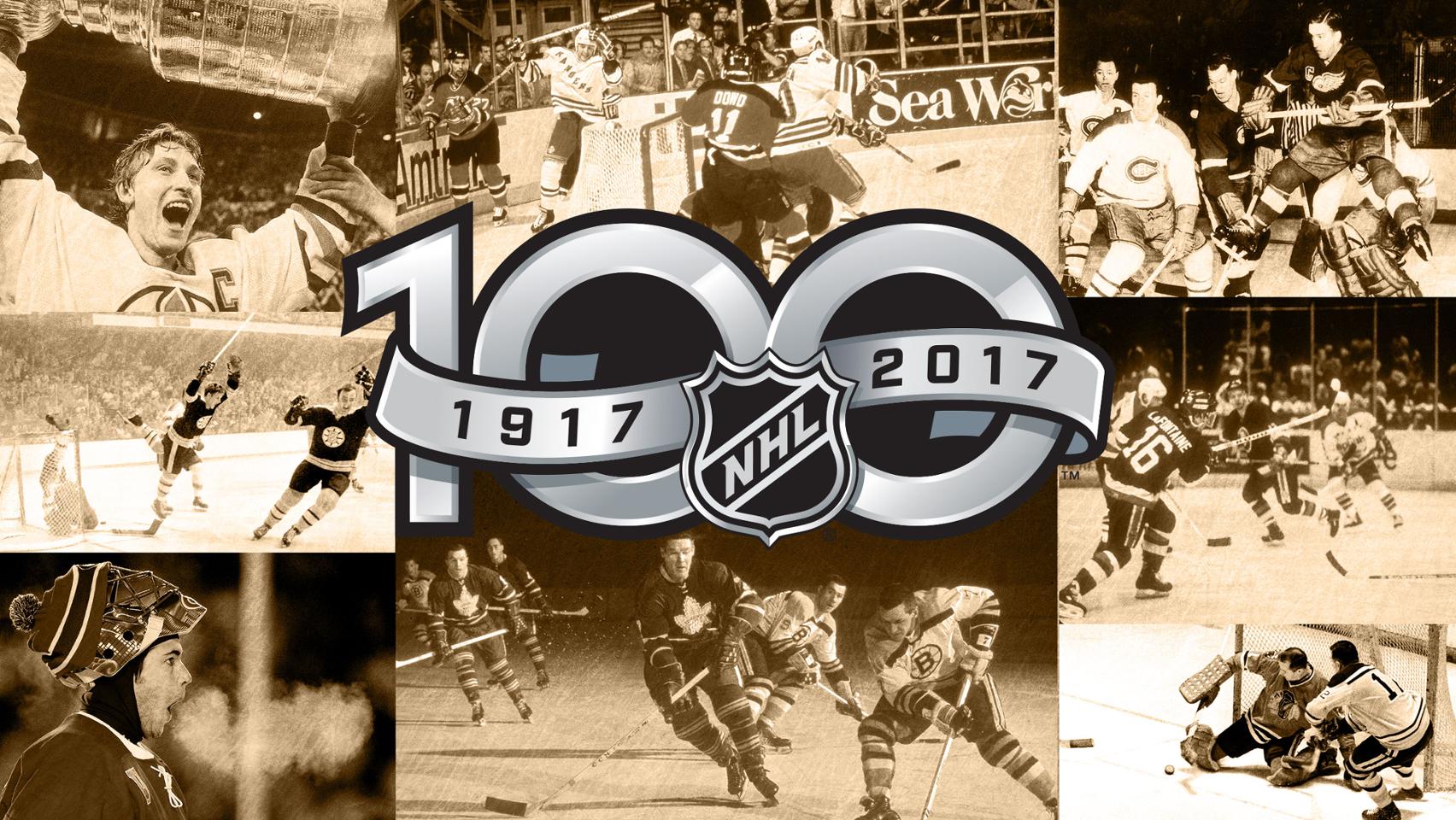by Stu Hackel / Special to NHL.com–
Tim Horton was called “Superman” by goaltender Johnny Bower, who believed the defenseman and longtime teammate with the Toronto Maple Leafs could lift a filled 40-gallon oil drum. Another teammate, center Dave Keon, recalled that Horton could throw around railroad ties “like they were toothpicks.” Fellow Toronto defenseman Bob Baun saw him barricade an intersection in Quebec as a prank by lifting barrels of cement. Gordie Howe of the Detroit Red Wings, hardly a weakling himself, called Horton “the strongest player in hockey.”
For many people today, the name Tim Horton means doughnuts and coffee at the fast-food franchise business he founded in 1964. But for more than two decades, Horton’s name meant skill, mobility and unsurpassed strength on defense in the NHL. Horton spent most of that time with the Maple Leafs, helping Toronto win four Stanley Cup championships. He was runner-up for the Norris Trophy twice and earned postseason All-Star recognition six times.
Hall of Fame defenseman Marcel Pronovost, who played against and with Horton, called him “the anchor of Toronto’s defense.” That’s high praise considering the defensemen on Punch Imlach’s Maple Leafs dynasty of the 1960s. There was Horton’s longtime partner, Hall of Fame member and three-time All-Star Allan Stanley; Baun, a hard hitter who played 17 seasons in the NHL; and four-time postseason All-Star Carl Brewer.
Pronovost joined them in 1965 for a few seasons at the end of his career and observed that Horton was “a leader – not loud; by his actions.”
“I would say that Horton, a little more than any other player, was the key to the success that we had,” said Imlach, as quoted by Frank Orr in the book “Remembering Tim Horton.”
“He was always there, always the same, always giving the effort, the best he had every night.”
Amazingly, Horton did it all with eyesight so poor that he was forced to wear thick glasses away from the rink, and many of his teammates gave him the nickname “Clark Kent,” Superman’s alter ego.
With a square jaw, wide shoulders and big legs beneath his brush-cut hairstyle, Horton wasn’t particularly big – he was listed as 5-foot-10, 180 pounds. But he was all muscle, especially his upper body, which he exercised regularly. Also, as his teammates would attest, he was fearless on and off the ice.
He was born Miles Gilbert Horton on Jan. 12, 1930, though his mother referred to him as “Tim” even before giving birth. Horton came from the mining region of Northern Ontario, became a standout junior for St. Michael’s Majors and was named the top defenseman in the Ontario Hockey Association in 1949.
Detroit Red Wings center Alex Delvecchio played against Horton in junior hockey and recalled on the “Legends of Hockey” television series that, “When he hit you, you knew you were hit, so any time he was out there you knew you had to try to keep your head up, make sure you had your head up and find out where the brush cut is.”
Not only could Horton stop opponents, he could also lead the rush, something unusual for a defenseman at that time. Later that year, when Maple Leafs owner and general manager Conn Smythe signed him to his first pro contract before he exhausted his junior eligibility, he called Horton “the No. 1 defense prospect in Canada.”
After three seasons with Pittsburgh of the American Hockey League, where he worked on his game and his strength, Horton took his place as a regular on Toronto’s blue line as a 23-year-old in 1952-53. He wasted little time making an impression; one season later he was selected as a Second-Team All-Star.
However, Horton’s promising career nearly ended prematurely in March 1955, when Bill Gadsby of the New York Rangers leveled him with a shoulder check to the head that broke Horton’s jaw and, as he fell, his right leg.
“The thought crossed my mind that I might have killed him,” Gadsby wrote in his autobiography, “The Grateful Gadsby.” Horton “looked like a casualty of war, blood seeping from one ear and the corner of his mouth. It was the scariest moment of my career.”
Horton didn’t return until midway through the 1955-56 season, but the injuries were so severe that they affected him for the next couple of seasons. However, when Imlach traded for the efficient Stanley in 1958 and paired them, Horton’s game took off, and his strong skating, hard shooting and dynamic puck-moving provided an extra dimension that helped Toronto become a championship-caliber team.
Horton played a central role in the Maple Leafs’ championship in 1962, Toronto’s first in 11 years. With three goals and 13 assists in 12 postseason games, he led the Maple Leafs in scoring and set a record for most points by a defenseman in one playoff year. The record-setting point came on a pass to Dick Duff that set up the Stanley Cup-winning goal late in Game 6 against the Chicago Blackhawks.
“He had a great shot at a time when defensemen didn’t have great shots,” Chicago goalie Glenn Hall said. “I remember his coming in and you’d start to take it waist-high and it comes up a little higher, a little higher and finally at the end, you’d duck out.”
Horton confessed in “Hockey Pictorial” in 1962 that he wasn’t averse to making goaltenders uncomfortable.
“I’ve spent hours working on it,” Horton said of his shot, “and a few hard drives seem to unnerve goalies. I like to try to scare them a bit,” although he acknowledged most of his goals came off wrist shots; the slappers were often tipped into the net or turned into rebounds that were converted by teammates.
However, defense ruled in Imlach’s world and Horton, a big hitter in his youth, refined the way he played.
“Positioning was what made him so good defensively,” said center Norm Ullman, a longtime opponent with the Red Wings and later a teammate in Toronto. “And to throw a body check could mean getting caught out of position.”
Chicago’s Bobby Hull, the most dynamic forward of that era, often confronted Horton’s strength and excellent positioning.
“I figured I was a pretty strong guy after a summer of work on my farm. Then I’d go against Horton,” he told Frank Orr. “Tim would be in my path, nothing dirty, no stickwork, and would stay there, no matter what I did. If I tried to bull between him and the boards, forget it, because he would just close the gate. Cut to the middle of the ice and he’d be there, too, crowding me, forcing me to shoot long-range or pass.”
Horton’s signature maneuver, wrapping up attacking forwards along the boards or in the corner, became his greatest weapon.
“Tim Horton would take you in the corner and put a bear hug on you and you couldn’t get away,” Delvecchio said with a laugh. “And he’d just say, ‘Stay right where you are.’ ”
Keon recalled how Horton would habitually retrieve the puck in the corner.
“He’d get down really low, and he was really powerful,” Keon said. “Guys would be in forechecking him and he could bring the puck into his feet and, all of a sudden, burst out of there. He’d go over the first guy, or around, and he’d be gone.”
Pronovost called him “the toughest guy to get the puck away from. He’d get that big body of his between you and the puck and you couldn’t move him, you couldn’t reach around him, and he’d make the play.”
Horton lacked a mean streak, for which many NHL opponents were grateful considering the damage he might have caused. But he didn’t need one. He simply used his massive strength to play the game and settle things down.
“Fighting Tim Horton? I can’t really remember him in a punch-up,” Ullman said on “Legends of Hockey.” “Most opponents, even the toughest, avoided him because when he got close and had a chance to put those arms around you, you were done. The Horton Bear Hug! It makes me shiver a little just to think about seeing a guy caught in it.”
One player who learned firsthand about the Horton Hug was Boston Bruins center Derek Sanderson. The brash rookie had been warned by teammates not to cheap-shot Horton, but Sanderson didn’t listen. He slashed Horton while forechecking him, drew a stern look, then did it again.
“He put the bear hug on me and started to squeeze,” Sanderson told Orr. “I heard my ribs groan and thought they were all going to crack. It really started to hurt, and then he let go and tossed me on my back like a towel. I never slashed him or challenged him again.”
Off the ice, Horton could be a pussycat. On the road, he habitually had to say good night to Keon before he went to sleep. One night Keon locked his hotel room door, frustrating the routine. Horton crashed through the door, breaking it, said good night and went to sleep.
Canadian professional hockey player Tim Horton (1930 – 1974) of the Buffalo Sabres skates during a game, mid 1970s. (Photo by Melchior DiGiacomo/Getty Images)
Toronto won the Stanley Cup again in 1963 and 1964, then made it four championships in six seasons by upsetting the Montreal Canadiens in 1967. But after that title the Maple Leafs declined. Though Horton had been a First-Team All-Star in 1968 and 1969, Toronto traded him to the New York Rangers in March 1970. He was claimed by the Pittsburgh Penguins in the intraleague draft in June 1971 and by the Buffalo Sabres, again in the intraleague draft, a year later.
In Buffalo, he was reunited with Imlach, who became coach and general manager in 1970. As they were negotiating Horton’s 1973-74 contract, the 44-year-old defenseman persuaded Imlach to throw in a sports car, something Imlach reluctantly agreed to do. He knew Horton loved cars and had even owned a sports car dealership before going into the doughnut business.
But after a game in Toronto on Feb. 20, 1974, Horton was driving that car back to Buffalo overnight when he lost control near St. Catharines, Ontario. The car rolled over several times and he was killed.
The game in Toronto had been Horton’s 1,446th in the regular season, a total that stood for 25 years as the NHL record for most games played by a defenseman. He totaled 115 goals and 518 points in 22 full seasons and was voted into the Hockey Hall of Fame in 1977.
(Reprinted with permission of NHL.com)







